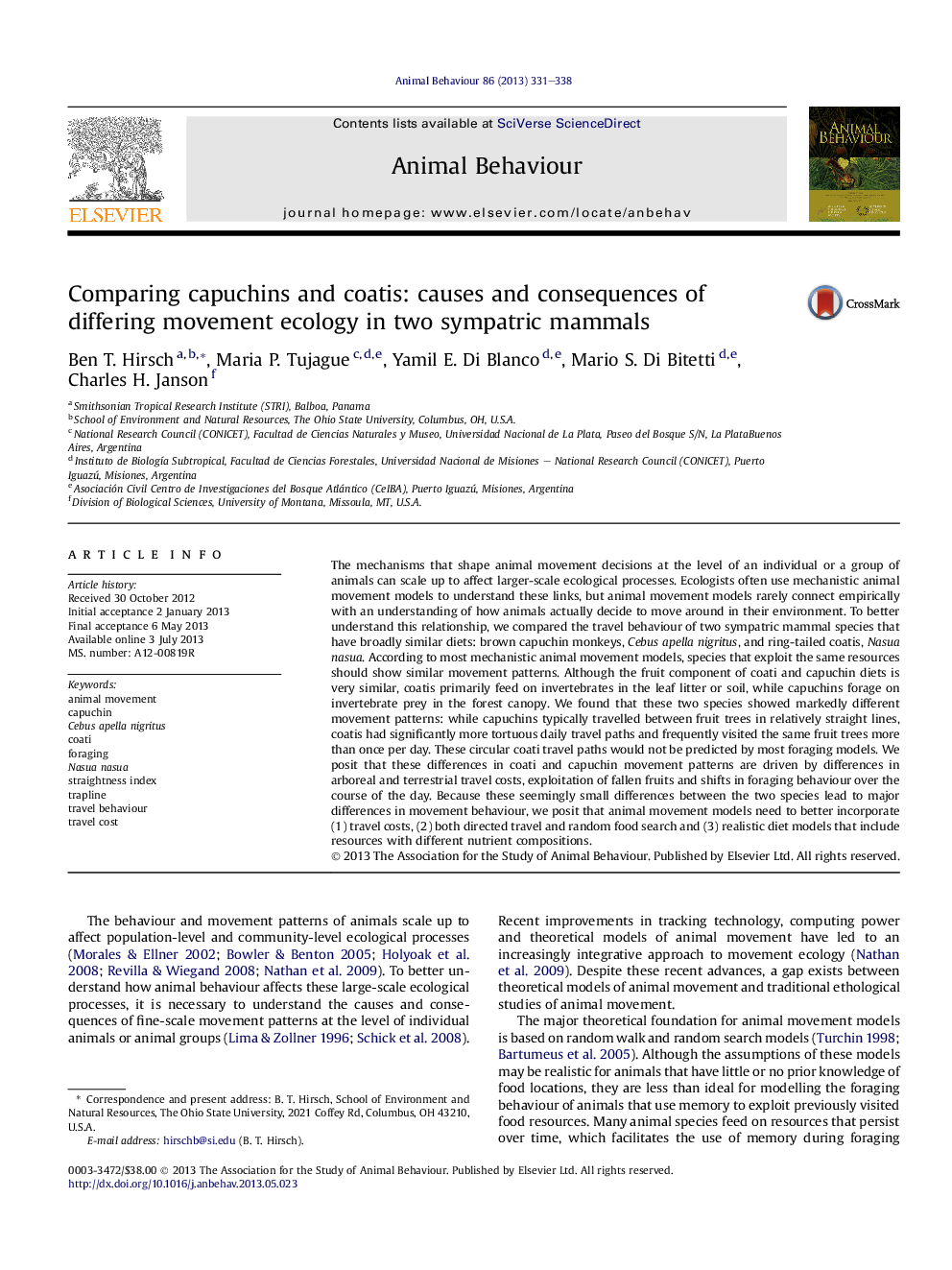| کد مقاله | کد نشریه | سال انتشار | مقاله انگلیسی | نسخه تمام متن |
|---|---|---|---|---|
| 2416598 | 1104282 | 2013 | 8 صفحه PDF | دانلود رایگان |

• We compared travel behaviour between two sympatric mammals with similar diets.
• Capuchin monkeys typically showed trapline foraging movements between fruit trees.
• Coatis showed circuitous travel and revisited the same areas during the day.
• Seemingly minor factors can lead to drastically different movement patterns.
• We posit that future animal movement models need to incorporate these factors.
The mechanisms that shape animal movement decisions at the level of an individual or a group of animals can scale up to affect larger-scale ecological processes. Ecologists often use mechanistic animal movement models to understand these links, but animal movement models rarely connect empirically with an understanding of how animals actually decide to move around in their environment. To better understand this relationship, we compared the travel behaviour of two sympatric mammal species that have broadly similar diets: brown capuchin monkeys, Cebus apella nigritus, and ring-tailed coatis, Nasua nasua. According to most mechanistic animal movement models, species that exploit the same resources should show similar movement patterns. Although the fruit component of coati and capuchin diets is very similar, coatis primarily feed on invertebrates in the leaf litter or soil, while capuchins forage on invertebrate prey in the forest canopy. We found that these two species showed markedly different movement patterns: while capuchins typically travelled between fruit trees in relatively straight lines, coatis had significantly more tortuous daily travel paths and frequently visited the same fruit trees more than once per day. These circular coati travel paths would not be predicted by most foraging models. We posit that these differences in coati and capuchin movement patterns are driven by differences in arboreal and terrestrial travel costs, exploitation of fallen fruits and shifts in foraging behaviour over the course of the day. Because these seemingly small differences between the two species lead to major differences in movement behaviour, we posit that animal movement models need to better incorporate (1) travel costs, (2) both directed travel and random food search and (3) realistic diet models that include resources with different nutrient compositions.
Journal: Animal Behaviour - Volume 86, Issue 2, August 2013, Pages 331–338